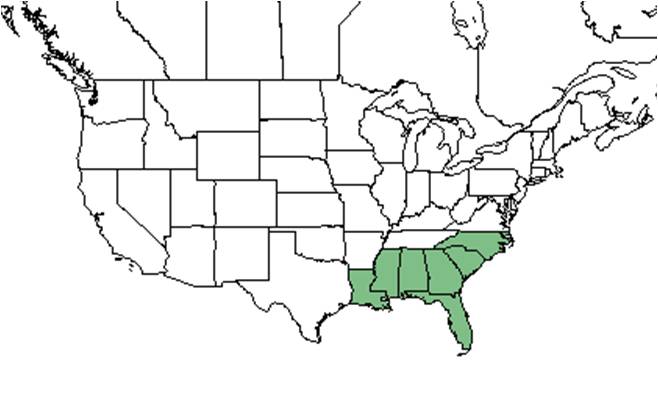Difference between revisions of "Hypericum fasciculatum"
KatieMccoy (talk | contribs) (→References and notes) |
KatieMccoy (talk | contribs) (→Description) |
||
| Line 21: | Line 21: | ||
==Taxonomic notes== | ==Taxonomic notes== | ||
==Description== | ==Description== | ||
| − | <!-- Basic life history facts such as annual/ | + | <!-- Basic life history facts such as annual/perennial, monoecious/dioecious, root morphology, seed type, etc. --> |
| + | ''H. fasciculatum'' is a short lived perennial that has a single stem with reddish bark and forms thin adventitious roots. It can be distinguished from similar species, such as ''H. brachyphyllum'' by having flat leaves with no apparent fold <ref name="hawthorne"[[http://hawthornhillwildflowers.blogspot.com/2011/05/sandweed-hypericum-fasciculatum.html]] Accessed: January 5, 2016</ref>. | ||
==Distribution== | ==Distribution== | ||
Revision as of 21:03, 5 January 2016
| Hypericum fasciculatum | |
|---|---|

| |
| Scientific classification | |
| Kingdom: | Plantae |
| Division: | Magnoliophyta - Flowering plants |
| Class: | Magnoliopsida - Dicotyledons |
| Order: | Theales |
| Family: | Clusiaceae ⁄ Guttiferae |
| Genus: | Hypericum |
| Species: | H. fasciculatum |
| Binomial name | |
| Hypericum fasciculatum Lam. | |

| |
| Natural range of Hypericum fasciculatum from USDA NRCS Plants Database. | |
Common name: Peelbark St. Johnswort
Contents
Taxonomic notes
Description
H. fasciculatum is a short lived perennial that has a single stem with reddish bark and forms thin adventitious roots. It can be distinguished from similar species, such as H. brachyphyllum by having flat leaves with no apparent fold <ref name="hawthorne"[[1]] Accessed: January 5, 2016</ref>.
Distribution
Ecology
Habitat
In the Coastal Plain in Florida and Georgia, H. fasciculatum can occur in Nyssa/Ilex communities, dry pond margins, ditches in pine flatwoods, titi bogs, rotted stumps, and dry bottoms of cypress ponds (FSU Herbarium). Associated species include Ilex myrtifolia, Eriocaulon lineare, Xyris, Rhynchospora corniculata, and Lycopodiella (FSU Herbarium). It grows in loamy sand (FSU Herbarium).
Phenology
It has been observed flowering in June and October and fruiting October through December (FSU Herbarium).
Seed dispersal
Seed bank and germination
Fire ecology
Pollination
The following Hymenoptera families and species were observed visiting flowers of Hypericum fasciculatum at Archbold Biological Station (Deyrup 2015):
Apidae: Apis mellifera, Bombus impatiens
Colletidae: Colletes nudus
Megachilidae: Coelioxys sayi
Use by animals
Diseases and parasites
Conservation and Management
Cultivation and restoration
Photo Gallery
References and notes
Deyrup, M.A. and N.D. 2015. Database of observations of Hymenoptera visitations to flowers of plants on Archbold Biological Station, Florida, USA.
Florida State University Robert K. Godfrey Herbarium database. URL: http://herbarium.bio.fsu.edu. Last accessed: October 2015. Collectors: Loran C. Anderson, Sara L. Crockett, R.K. Godfrey, Howard Horne, Virginia Jin, R. Komarek, K. MacClendon, T. MacClendon, Sidney McDaniel, R.A. Norris, Cecil R. Slaughter. States and Counties: Florida: Calhoun, Liberty, Osceola, Wakulla, Walton. Georgia: Clinch, Thomas. Compiled by Tall Timbers Research Station and Land Conservancy.